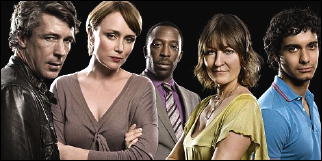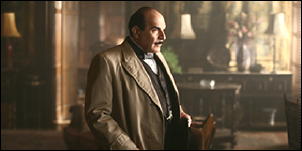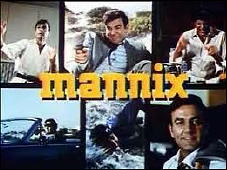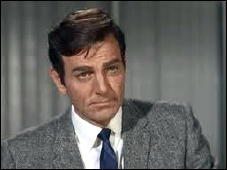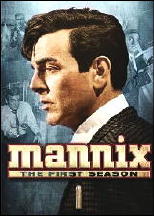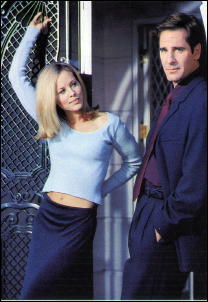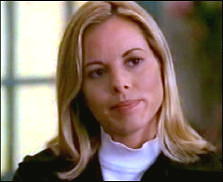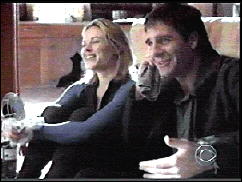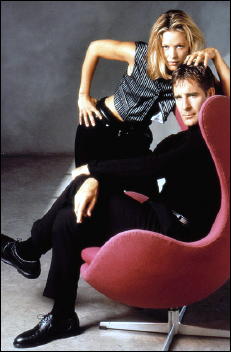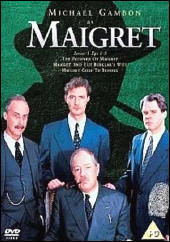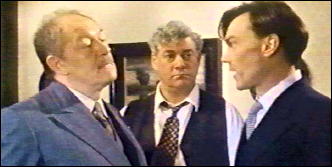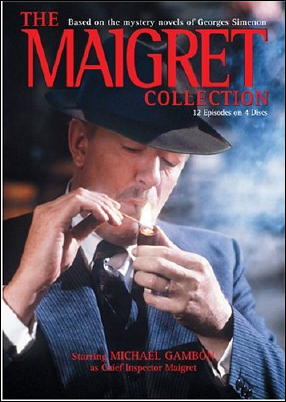PRIME TIME SUSPECTS
by TISE VAHIMAGI
Part 2.1: Evolution of the TV Genre (US)
This section might be called The Slicks and The Pulps. It seems that Radio and Cinema have always been at the heart of American entertainment. Well, at least since the late 1920s.
In the beginning, there were four major US radio networks. Two were owned by NBC (which started broadcasting in 1926), one by CBS (from 1928), and one by MBS (Mutual Broadcasting System; from 1934). Between them, they accounted for an enormous national force.
When it comes to Old Time Radio (OTR), I am a mere novice. My own copy of John Dunning’s wonderful On the Air: The Encyclopedia of Old-Time Radio (Oxford University Press, N.Y., 1998) is almost in well-thumbed shreds. But I am still on the nursery-slopes here. I very much enjoy listening to OTR programmes rather than collecting them (whereas my ever-growing DVD collection of Cinema and TV is virtually forcing me out of my home!).
US radio dramatics were in their turn influenced by the exciting era of the Pulp magazines, roughly from about the mid 1920s to the early 1950s. (I imagine that Steve, a true Pulp magazine aficionado, would probably have more to say on the subject.)
Hollywood, in its early Sound decades, was influenced (to a small degree) by the Pulps; just witness the glorious output of the serial studios like Universal, Columbia (whose 1938 The Spider’s Web remains surely the best serial ever), and Republic.
Although the more high-class studios (like MGM and Paramount) acquired pre-publishing rights to produce film versions of contemporary “best sellers,” the published works of genre authors like Dashiell Hammett, Raymond Chandler and James M. Cain were also scooped up.
It is perhaps through filming these genre works that the Hollywood studios and their filmmakers happened upon the 1940s film style of Film Noir (as termed by French film critics after WWII).
The first stage, the “experimental,” saw NBC transmit the very first Sherlock Holmes on the small-screen, The Three Garridebs, on 27 November 1937 (with Luis Hector as Holmes and William Podmore as Watson).
On 17 May 1938, NBC (or rather RCA-NBC) showed The Mysterious Mummy Case, written and directed by Thomas Hutchinson. The 25-minute programme, about some mysterious deaths related to an evil-spreading mummy case, served as an experiment in engineering as an ally of dramatic narrative.
At the end of 1941, NBC produced Blind Alley, featuring a gang of crooks taking over a psychiatry professor’s household. The TV version was based on James Warwick’s 1938 Broadway play, which was filmed by Columbia in 1939 and then remade as The Dark Past in 1948.
Closing-down the early “experimental” period was The Item of the Scarlet Ace (NBC, 1941), adapted from the Blue Network radio series The Bishop and the Gargoyle. Crimebuster-and-sidekick, Richard Gordon (as the Bishop) and Ken Lynch (the Gargoyle), continued their radio roles.
The documentary aspect came with, for example, Bureau of Missing Persons (DuMont, 1943), which demonstrated the activities of the NYC Police Department’s Missing Persons unit. A later example may be the intriguingly-titled Rackets Are My Racket (DuMont, 1948), designed to expose real-life frauds and confidence games.
On the border between the actual and sheer drama was DuMont’s The Woman Who Was Acquitted (June 1944). The story deals with a psychological exploration into the guilt of an acquitted murderess who had confessed her crime while in a cataleptic trance.
Crime Quiz (DuMont, 1944) was one of the earliest viewer-participation shows in which the studio audience/home viewer had to solve a routine whodunit. Armchair Detective (not to be confused with the British radio and TV series created by Ernest Dudley) was a 1948-49 CBS series which presented two whodunits within its half-hour and invited the audience to guess the solution.
You Be the Jury (KLAC-TV, 1949) followed a similar path, this time from the viewpoint of a murder trial. Likewise TV Detective (NBC, 1949), with the camera acting as a private detective; much like the police detective drama The Plainclothesman (DuMont, 1949-54). Your Witness (KECA-TV, 1949) was perhaps the last of the audience-participation shows.
Appearing around the same time as each other, in October 1945, were two similar crime-buster shows. Diary of Death (CBS) was a TV version of the popular radio series Casey, Crime Photographer (CBS Radio), a 30-minute murder mystery written for the small-screen by Lela Swift (from the radio play by Chuck Holden).
Photocrime (CBS) started off on local station WCBW in an attempt to dramatize the photo journalism stories appearing in the general-interest Look magazine, before the series was networked by ABC in 1949. For the network series, incidentally, Chuck Webster played police Inspector Hannibal Cobb.
January 1946 started off with the CBS dramatization of Lucille Fletcher’s Sorry, Wrong Number, directed by John Houseman (assisted by Nick Ray), and starring young Mildred Natwick as the seemingly neurotic one.
One of the pleasures awaiting the genre fan in 1946 was the full-length TV play (some 100 minutes) of Mr. and Mrs. North (NBC, May), adapted from the Broadway production, which in turn was based on the Frances and Richard Lockridge The New Yorker magazine series. According to contemporary reviews, the TV version was awash with “whodunit qualities.” Maxine Stewart was the zany Pam North and John McQuade was the more shrewd Jerry North.
US Radio, as a primary source in the early days, served up the NBC Radio suspense anthology Lights Out. In 1946 (June to August), NBC produced four TV Lights Out specials, all under producer Fred Coe.
They involved (for the first time on TV) the effects, for example, of the camera itself as the murderer and then, later, the full use of the television split-screen process. The regular TV series ran on NBC from 1949 to 1952. Inspired later perhaps by radio’s Inner Sanctum Mysteries was Mr. Black (ABC, 1949), a ghostly mystery series supervised by the satanic title character.
In November 1946, CBS produced Brief Pause for Murder, about a radio announcer obsessed with a plot to strangle his wife. The story was taken from the long-running 1942-55 CBS Radio series The Whistler.
Another TV example was Lucky Night (WBKB Chicago, June 1948), featuring some atmospheric shots (stormy night, waves dashing against shore) at times pre-dating 1960-62’s Thriller. The script (by Russell Hughes) was lifted directly from The Whistler radio show. Incidentally, the drama was intended to act as a pilot for a TV suspense series to be called Boomerang (produced by MCA).
The ongoing series’ format was slowly but surely beginning to creep into the TV production process.
The industrious DuMont produced the half-hour Trouble, Inc. (July 1949), a whodunit pilot starring Earl Hammond and Carol Hill as an adventurous couple who team up in Trouble, Inc., an outfit that will do “anything, anywhere, anytime.”
Another pilot project from DuMont came in the form of Hands of Murder (August 1949). Featuring Steve Eliot and Charlotte Keane, the story told of a desperate factory worker who was driven to murder his violent loan shark. It was presented as a part of DuMont’s Program Playhouse (June-September 1949). From the latter Playhouse, a little earlier, had come an early version of a based-on-the-files-of drama called Federal Agent (June 1949).
From now on it was the series (and in some ways, the anthology) that commanded the genre.
Frank Wood – Private Detective (WBKB Chicago) was a short-run 1947 series starring Joe Bellucci as the title sleuth. The Public Prosecutor (1947) became Crawford Mystery Theatre (DuMont, 1951) and appeared to be a combination of crime drama and quiz. Syndicated series Mystery Is My Hobby (1949) starred Glenn Langan as a police detective.
Barney Blake, Police Reporter (NBC, 1948), it seemed, was under the thumb of sponsor Lucky Strike cigarettes (The American Tobacco Company). It was of course a live series in which our hero, a Front Page style newspaperman (played by Gene O’Donnell), solved each week’s whodunit mystery between ad breaks of marching cigarettes.
Frederic Ziv had acquired the rights to the Boston Blackie property and produced a syndicated version starring an unlikely Robert Middleton in 1948. The more familiar series featuring Kent Taylor as Blackie was syndicated from 1951.
The intriguing crime, mystery and suspense drama Chicagoland Television Mystery Players first appeared over WGN-TV (Chicago) in September 1948. It continued to feature Gordon Urquhart as the crime-busting hero when it was shown via DuMont in 1949-50, retitled Chicagoland Mystery Players.
The next instalment here will look at the genre’s Adventurers, their often Foreign Settings, and Cold War Espionage. The turbulent period 1951 to 1956. Series will range from China Smith to The Man Called X.
Note: The introduction to this series of columns by Tise Vahimagi on TV mysteries and crime shows may be found here, followed by:
Part 1: Basic Characteristics (A Swift Overview)
Part 2.0: Evolution of the TV Genre (UK)
